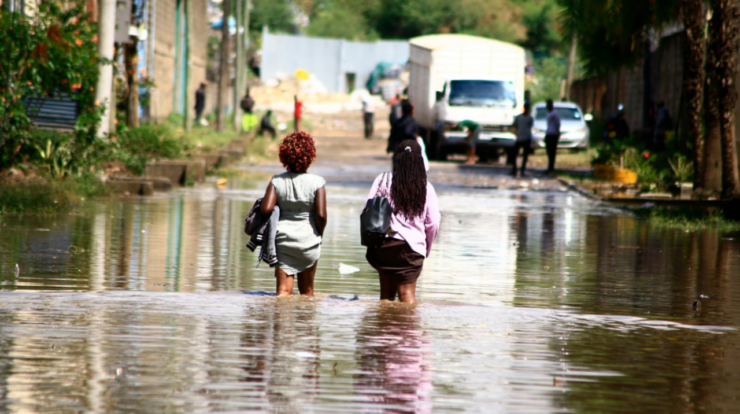
Kenya nairobi flooding – Kenya’s capital city, Nairobi, has long been plagued by devastating floods, leaving a trail of destruction and posing significant challenges to its residents. This article delves into the history, causes, and impacts of flooding in Nairobi, exploring the complex interplay between urbanization, climate change, and community resilience.
From the torrential downpours that have inundated the city in recent years to the long-term consequences on infrastructure and livelihoods, the issue of flooding in Nairobi demands urgent attention. This article aims to shed light on the multifaceted nature of this crisis and the efforts underway to mitigate its effects.
Nairobi’s Flooding History

Flooding has been a persistent challenge in Nairobi for decades, with severe events occurring in 1961, 1981, 1997, 2006, and 2013. These floods have resulted in significant loss of life, damage to infrastructure, and economic disruption. The causes of flooding in Nairobi are complex, including a combination of geographical factors, urbanization, and climate change.
Causes of Flooding in Nairobi
Nairobi’s location in a valley surrounded by hills makes it prone to flooding during heavy rainfall. The city’s rapid urbanization has also contributed to flooding, as the expansion of impervious surfaces, such as roads and buildings, reduces the ability of the ground to absorb water.
Additionally, climate change is exacerbating flooding patterns, with increased rainfall intensity and frequency leading to more frequent and severe floods.
Impacts of Flooding on Nairobi, Kenya nairobi flooding
Flooding in Nairobi has devastating consequences, including loss of life, damage to infrastructure, and economic disruption. The floods can wash away homes, businesses, and roads, and can also contaminate water sources, leading to health risks. The economic impact of flooding can be significant, with businesses losing revenue and employees losing wages.
Flood Mitigation and Management Strategies
There are a number of flood mitigation and management strategies that can be implemented in Nairobi to reduce the risk of flooding and its impacts. These include improving drainage systems, constructing floodwalls and levees, and implementing flood warning systems. It is also important to promote sustainable urbanization practices, such as green infrastructure and permeable pavements, which can help to reduce runoff and improve water absorption.
Community Resilience and Adaptation
Communities play a vital role in flood preparedness and response. Early warning systems and evacuation plans can help to save lives and reduce the impact of flooding. Communities can also implement their own flood mitigation measures, such as planting trees and building rain gardens, which can help to reduce runoff and improve water absorption.
Future Flood Risk Assessment
Climate change is expected to increase the frequency and severity of flooding in Nairobi in the future. It is important to assess the future flood risk and identify vulnerable areas and populations. This information can be used to develop flood mitigation and management strategies that will help to protect Nairobi from the impacts of future flooding.
Wrap-Up

As Nairobi continues to grapple with the challenges of flooding, it is imperative to prioritize flood mitigation and management strategies that are both effective and sustainable. By investing in infrastructure, promoting community resilience, and implementing innovative solutions, the city can work towards reducing the devastating impacts of floods and safeguarding the well-being of its residents.
The future of Nairobi depends on its ability to adapt to the increasing frequency and severity of flooding events. By embracing a proactive approach and fostering collaboration between stakeholders, the city can build a more resilient and flood-proof future.
Questions and Answers: Kenya Nairobi Flooding
What are the primary causes of flooding in Nairobi?
Flooding in Nairobi is primarily caused by a combination of factors, including heavy rainfall, inadequate drainage systems, urbanization, and the encroachment of settlements on floodplains.
What are the most significant impacts of flooding on Nairobi?
Flooding in Nairobi has severe economic, social, and environmental impacts. It damages infrastructure, disrupts livelihoods, and poses health risks to residents. It also exacerbates poverty and inequality.
What measures are being taken to mitigate flooding in Nairobi?
The Kenyan government and other stakeholders are implementing various measures to mitigate flooding in Nairobi, including improving drainage systems, restoring wetlands, and implementing flood early warning systems. Community-led initiatives also play a vital role in raising awareness and promoting preparedness.





